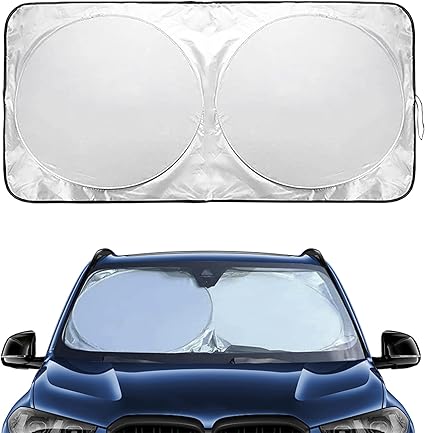10 Must-Know Microsoft Word Tutorials for Beginners and Pros
Published on January 1, 2025 | By The Engineer Post
Unlock the full potential of Microsoft Word with these 10 essential tutorials! From translating documents and inserting a table of contents to adding equations, embedding videos, and protecting documents, this guide covers everything you need to create professional documents. Perfect for beginners and pros, our step-by-step instructions, visuals, and tips will help you master Word and outshine competitors. Plus, explore recommended products to enhance your productivity!
Note: Amazon product links are included for convenience (affiliate links). Get the tools you need to excel in Microsoft Word!
Table of Contents
- 1. Translate a Document
- 2. Translate a Specific Text
- 3. Insert a Table of Contents
- 4. Insert Equations
- 5. Insert a Video
- 6. Highlight a Full Sentence
- 7. Insert a List of Figures
- 8. Add a Signature
- 9. Protect Your Document
- 10. Fix Image Placement Issues
- Recommended Products
- Troubleshooting Tips
- Frequently Asked Questions
1. Translate a Document
How do I translate a document in Microsoft Word? Word’s translation tool makes it easy to convert your entire document into another language.
1Access Translation Tool: Go to Review > Translate > Translate Document.


3Translate: Click Translate to generate a new document with the translated text.

4Review Result: A new document opens with the translated content.

💡Tip: Save the translated document separately to preserve the original.
2. Translate a Specific Text
How do I translate specific text in Word? Translate only selected text without affecting the entire document.
1Select Text: Highlight the text you want to translate, then go to Review > Translate > Translate Selection.

2Choose Language: Select the target language in the translation pane.

3Insert Translation: Click Insert to replace the highlighted text with the translated version.

4Review Result: The selected text is replaced with the translation.

💡Tip: Copy the original text to a separate document before translating to preserve it.
3. Insert a Table of Contents
How do I insert a table of contents in Word? An automatic table of contents (TOC) requires properly formatted headings. Follow these steps to create a professional TOC.
Part 1: Set Up Headings and Multilevel Lists
Proper heading styles and multilevel lists ensure an accurate TOC.
1Access Multilevel List: Go to Home > Paragraph > Multilevel List.

2Define Numbering for Main Title (Heading 1): Select Define New Multilevel List, set Level 1 to “1, 2, 3,” and link to Heading 1.


3Big Title (Heading 2): Set Level 2 to “1.1, 1.2” and link to Heading 2.


4Small Title (Heading 3): Set Level 3 to “1.1.1, 1.1.2,” include the previous level number, and link to Heading 3.



5Set Display Levels: In the TOC settings, select Level 4 (Heading 3 + 1).

Part 2: Apply Headings
Assign heading styles to your document’s titles.
6Main Title: Highlight the main title (e.g., “Introduction”) and apply Heading 1.

7Big Titles: Select subheadings (e.g., “Chapter 1”) and apply Heading 2.

8Small Titles: Select smaller subheadings (e.g., “1.1 Overview”) and apply Heading 3.

💡Tip: Use the Navigation Pane (View > Navigation Pane) to verify your heading structure.

Part 3: Insert the Table of Contents
9Insert TOC: Place the cursor where you want the TOC, go to References > Table of Contents, and select an automatic style (e.g., “Automatic Table 1”).



💡Tip: Update the TOC by right-clicking and selecting Update Field after editing headings.
4. Insert Equations
How do I insert equations in Word? Word’s equation editor simplifies adding mathematical expressions.
1Access Equation Tool: Go to Insert > Equation.

2Select or Create Equation: Choose a pre-built equation from the dropdown or click Equation to create a custom one.

3Add Complex Operators: Use the double arrow to access advanced operators (e.g., integrals, matrices).

4Create Equation: Build your equation, such as a trigonometric identity.


💡Tip: Use keyboard shortcuts (e.g., Alt + =) to quickly insert an equation field.
5. Insert a Video
How do I insert a video in Word? Embed online videos (e.g., YouTube) after disabling compatibility mode.
Part 1: Disable Compatibility Mode
1Check Compatibility Mode: If “Compatibility Mode” appears in the title bar, proceed to disable it.

2Access File Menu: Click File.

3Go to Info: Click Info > Convert.

4Confirm Conversion: Click OK to update the document format.

Part 2: Insert the Video
5Copy Video URL: Copy the URL of the YouTube video.

6Insert Video: Go to Insert > Online Video.

7Paste URL: Paste the video URL and click Insert.


💡Tip: Ensure an active internet connection to view embedded videos.
6. Highlight a Full Sentence
How do I highlight an entire sentence in Word? Use a quick keyboard shortcut to select a sentence.
1Select Sentence: Hold Ctrl (Windows) or Command (Mac) and click anywhere in the sentence.


2Highlight: The entire sentence is highlighted.

💡Tip: Apply formatting (e.g., bold, color) to the highlighted sentence for emphasis.
7. Insert a List of Figures
How do I insert a list of figures in Word? A list of figures requires properly labeled images.
Part 1: Add Captions to Images
1Add Caption: Select an image, right-click, and choose Insert Caption.

2Customize Caption: Enter the caption text and click OK. Customize style (e.g., font, color) without altering the caption text.


3Repeat for All Images: Add captions to all images, noting automatic figure numbering.

Part 2: Insert the List of Figures
4Place Cursor: Click where you want the list of figures.

5Insert List: Go to References > Insert Table of Figures and click OK.



Part 3: Update the List of Figures
6Update List: After adding new images with captions, click anywhere in the list, go to References > Update Table.

💡Tip: Ctrl + click on a figure in the list to jump to its location in the document.
8. Add a Signature
How do I add a signature in Word? Create a digital signature using the drawing tools.
1Access Shapes: Go to Insert > Shapes > Freeform: Scribble.


2Draw Signature: Use the mouse to draw your signature.

3Position and Resize: Move and resize the signature as needed.
💡Tip: Save the signature as an image for reuse in other documents.
9. Protect Your Document
How do I protect a document in Word? Add a password to secure your file.
1Access File Menu: Go to File.

2Go to Info: Click Info > Protect Document > Encrypt with Password.


3Enter Password: Type a password and confirm it.


4Test Protection: Save and close the document. Reopening requires the password.

💡Tip: Store the password securely, as it cannot be recovered if lost.
10. Fix Image Placement Issues
How do I fix image placement in Word? Adjust text wrapping and positioning for professional layouts.
1Select Image: Click the image, then click the layout options icon (top-right arc).

2Choose Square Wrapping: Select Square for text to wrap around the image.

3Position Image: Drag the image to any location; text adjusts automatically.

4Use Top and Bottom Wrapping: For no text on the sides, select Top and Bottom.

5Fix Position: Choose Fix Position on Page to lock the image’s location or Move with Text to let it flow with text.

💡Tip: Use In Line with Text for simple layouts where images align with text like regular characters.
Recommended Products
Troubleshooting Tips for Microsoft Word
Encounter issues while using these features? Here are solutions to common problems.
1Translation Errors: If translations are inaccurate, verify your internet connection and select a closely related language (e.g., Spanish (Mexico) vs. Spanish (Spain)).
2Table of Contents Not Updating: Ensure all headings use proper styles (Heading 1, Heading 2, etc.). Right-click the TOC and select Update Field.
3Video Not Embedding: Confirm the document is not in Compatibility Mode and the video URL is from a supported platform (e.g., YouTube).
4Image Misalignment: If images shift unexpectedly, select Fix Position on Page to lock their location.
5Password Not Working: If you forget a document’s password, recovery is not possible. Always store passwords securely.
💡Advanced Tip: Use File > Options > Proofing to enable real-time spellcheck and grammar suggestions for polished documents.
Frequently Asked Questions
Got questions? We’ve got answers!
Can I translate a document in Word without an internet connection?
No, Word’s translation feature requires an internet connection to access Microsoft’s translation services.
How do I update a table of contents in Word?
Right-click the table of contents and select Update Field. Choose to update the entire table or just page numbers.
Why can’t I insert a video in Word?
Ensure your document is not in Compatibility Mode. Go to File > Info > Convert to update the document format.
How do I recover a forgotten document password?
Unfortunately, Microsoft Word does not offer password recovery. Always store passwords securely.
Can I customize the list of figures in Word?
Yes, go to References > Insert Table of Figures and adjust options like caption style and numbering.
Comparison: Manual vs. Automatic Features
Should you use manual or automatic methods for these Word features? Here’s a quick comparison.
| Feature | Manual Method | Automatic Method | Best For |
|---|---|---|---|
| Table of Contents | Type headings and page numbers manually | Use References > Table of Contents | Automatic for large, dynamic documents |
| List of Figures | List figures and captions manually | Use References > Insert Table of Figures | Automatic for documents with many images |
| Translation | Copy text to an external translator | Use Review > Translate | Automatic for quick, integrated translations |
| Signature | Insert a scanned image of your signature | Use Insert > Shapes > Scribble | Manual for high-quality, reusable signatures |
Beginner’s Guide to Microsoft Word
New to Word? Here’s a quick overview of the interface and tips for professional formatting.
1Understand the Ribbon: The ribbon at the top contains tabs like Home, Insert, and Review, each with tools for specific tasks.
2Use Styles: Apply styles (e.g., Heading 1, Normal) from the Home tab for consistent formatting.
3Save Regularly: Use File > Save As or enable AutoSave with Microsoft 365.
💡Tip: Explore templates in File > New for resumes, reports, and more to jumpstart your projects.
Conclusion
Mastering Microsoft Word is easier than ever with these 10 tutorials! From translating documents to inserting a table of contents, adding equations, and protecting your work, you’re now equipped to create professional documents with ease. Try these features today and elevate your productivity!
Have questions or tips to share? Drop a comment below or check out our other Word tutorials for more insights!






0 Commentaires